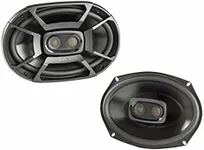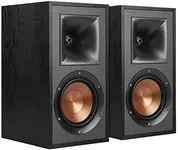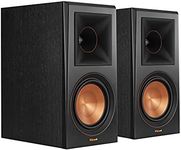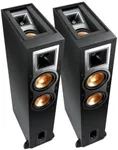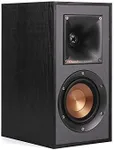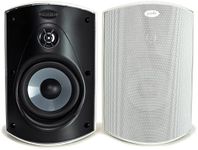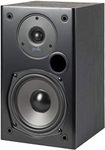Buying Guide for the Best Passive Speaker
When choosing a passive speaker, it's important to understand that these speakers require an external amplifier to function. This means you have more control over the sound quality and power, but it also means you need to match the speaker with a suitable amplifier. The right passive speaker for you will depend on your specific needs, such as the size of the room, the type of music you listen to, and your overall sound preferences. Here are some key specifications to consider when selecting a passive speaker.Power HandlingPower handling refers to the amount of power a speaker can handle from an amplifier without being damaged. This is important because it ensures that your speaker can handle the output from your amplifier without distortion or damage. Power handling is usually measured in watts and is divided into two segments: RMS (continuous power) and peak power. RMS is the amount of power the speaker can handle continuously, while peak power is the maximum power it can handle in short bursts. For most users, focusing on the RMS value is more important as it reflects the speaker's performance during regular use. Choose a speaker with an RMS power rating that matches or slightly exceeds the output of your amplifier.
ImpedanceImpedance is the resistance a speaker offers to the current from the amplifier and is measured in ohms. This spec is crucial because it affects how much power the speaker will draw from the amplifier. Common impedance values are 4, 6, and 8 ohms. Lower impedance speakers (4 ohms) draw more power and can be louder, but they require an amplifier that can handle the lower resistance. Higher impedance speakers (8 ohms) are easier on the amplifier but may not be as loud. To pick the right impedance, check your amplifier's specifications to ensure it can handle the speaker's impedance. Matching the impedance correctly ensures optimal performance and prevents damage to your equipment.
Frequency ResponseFrequency response indicates the range of frequencies a speaker can reproduce, measured in Hertz (Hz). This is important because it determines how accurately the speaker can reproduce different sounds, from deep bass to high treble. A typical frequency response range for a good speaker is 20 Hz to 20,000 Hz, which covers the full range of human hearing. However, the actual range you need depends on your listening preferences. If you enjoy bass-heavy music, look for speakers with a lower frequency response (e.g., 20 Hz). For general listening, a standard range (e.g., 40 Hz to 20,000 Hz) should suffice. Choose a frequency response that matches the type of audio you most frequently listen to.
SensitivitySensitivity measures how efficiently a speaker converts power into sound, expressed in decibels (dB). This is important because it affects how loud the speaker will be at a given power level. Higher sensitivity speakers (90 dB and above) require less power to produce the same volume as lower sensitivity speakers (below 90 dB). If you have a lower-powered amplifier, choosing a high-sensitivity speaker will help you achieve higher volumes without needing more power. Conversely, if you have a powerful amplifier, sensitivity is less of a concern. Consider your amplifier's power and your desired volume levels when choosing the sensitivity rating.
Driver Size and TypeDrivers are the components within the speaker that produce sound, and their size and type can significantly impact audio quality. Common driver types include woofers (for bass), mid-range drivers (for mid frequencies), and tweeters (for high frequencies). Larger drivers generally produce better bass, while smaller drivers excel at higher frequencies. The right driver size and type depend on your listening preferences and the type of music you enjoy. For example, if you listen to bass-heavy music, look for speakers with larger woofers. For a balanced sound, choose speakers with a combination of different driver types. Consider the size of your room as well, as larger drivers may be more suitable for bigger spaces.


